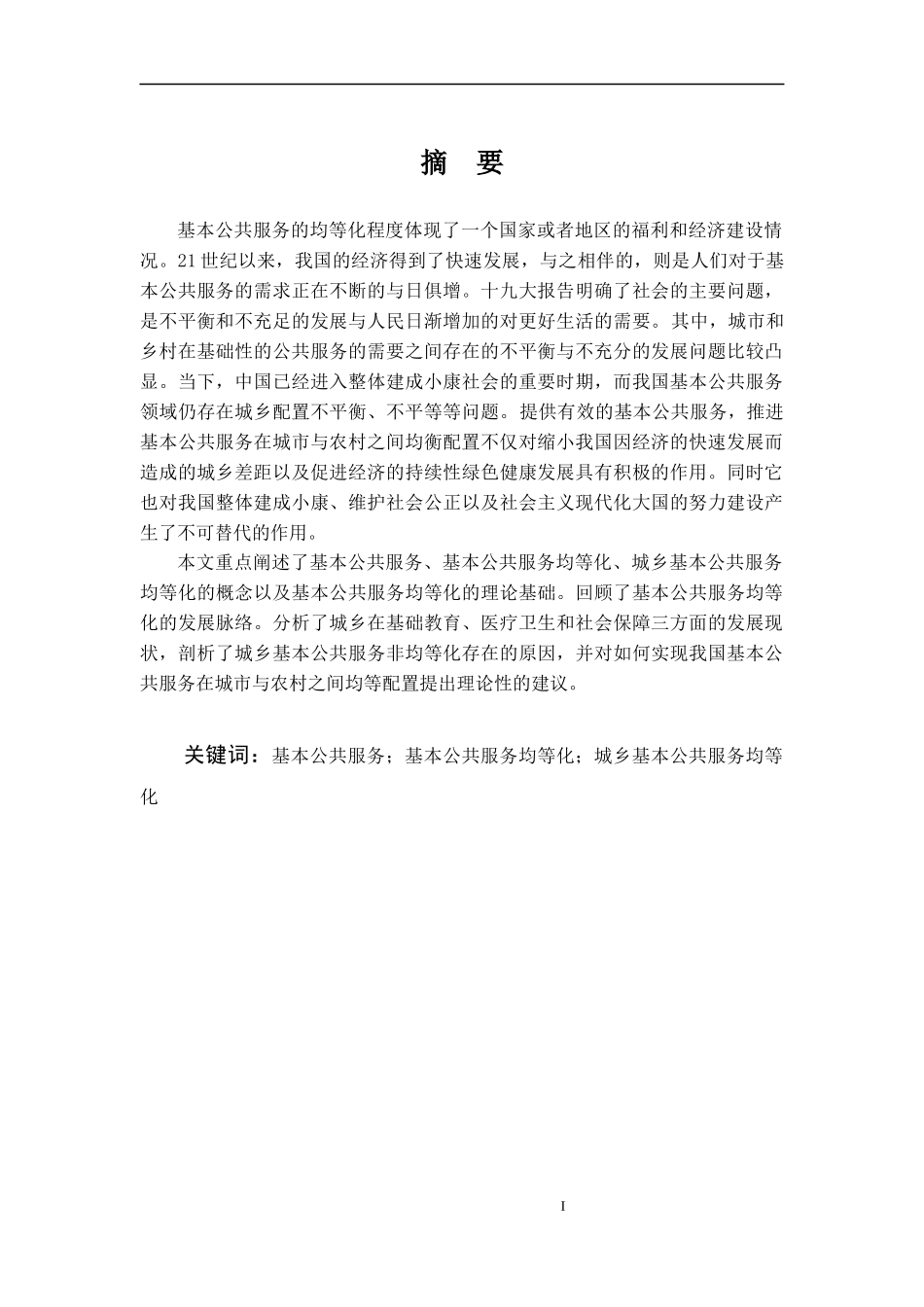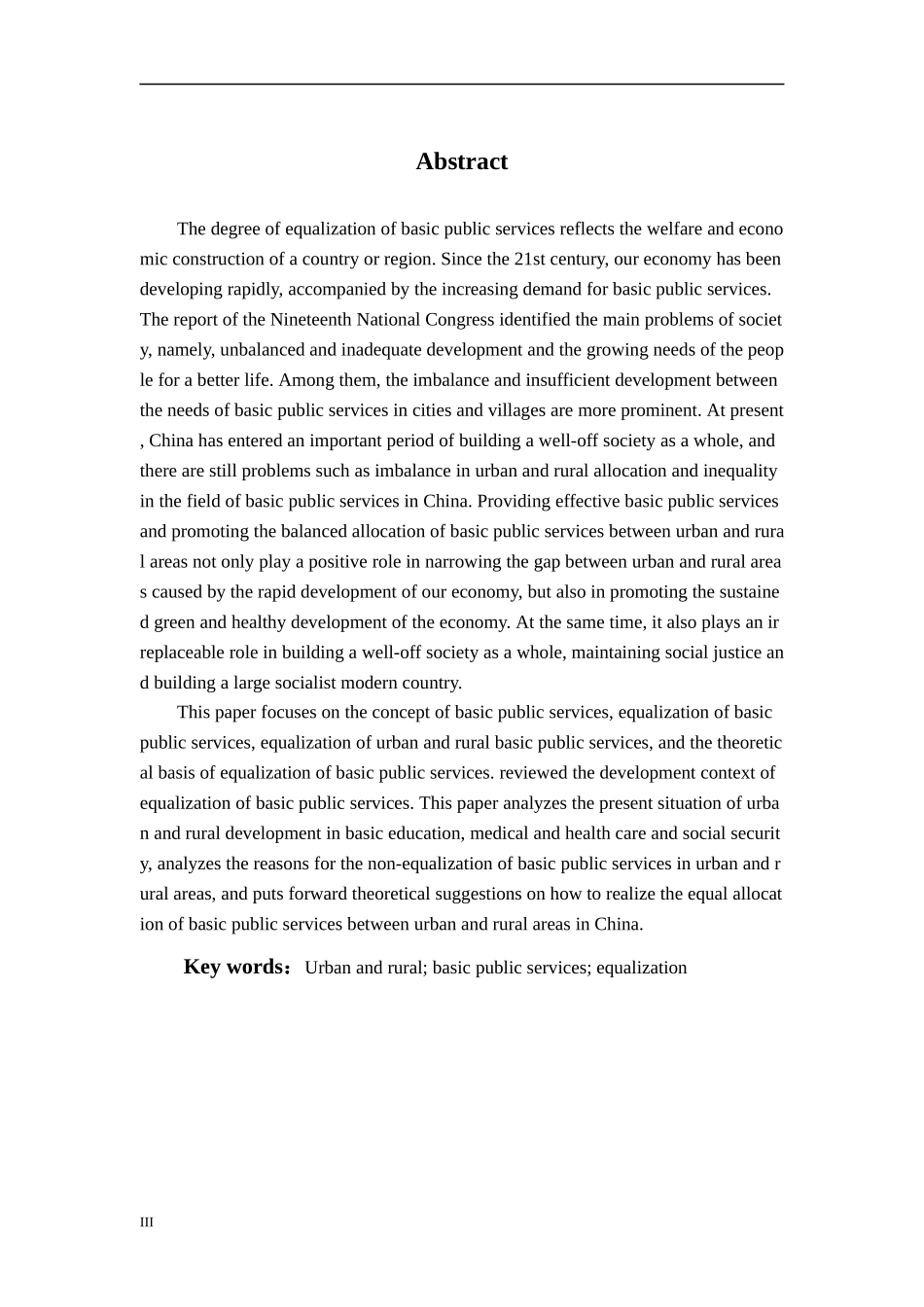I摘 要基本公共服务的均等化程度体现了一个国家或者地区的福利和经济建设情况。21 世纪以来,我国的经济得到了快速发展,与之相伴的,则是人们对于基本公共服务的需求正在不断的与日俱增。十九大报告明确了社会的主要问题,是不平衡和不充足的发展与人民日渐增加的对更好生活的需要。其中,城市和乡村在基础性的公共服务的需要之间存在的不平衡与不充分的发展问题比较凸显。当下,中国已经进入整体建成小康社会的重要时期,而我国基本公共服务领域仍存在城乡配置不平衡、不平等等问题。提供有效的基本公共服务,推进基本公共服务在城市与农村之间均衡配置不仅对缩小我国因经济的快速发展而造成的城乡差距以及促进经济的持续性绿色健康发展具有积极的作用。同时它也对我国整体建成小康、维护社会公正以及社会主义现代化大国的努力建设产生了不可替代的作用。本文重点阐述了基本公共服务、基本公共服务均等化、城乡基本公共服务均等化的概念以及基本公共服务均等化的理论基础。回顾了基本公共服务均等化的发展脉络。分析了城乡在基础教育、医疗卫生和社会保障三方面的发展现状,剖析了城乡基本公共服务非均等化存在的原因,并对如何实现我国基本公共服务在城市与农村之间均等配置提出理论性的建议。关键词:基本公共服务;基本公共服务均等化;城乡基本公共服务均等化II IIIAbstractThe degree of equalization of basic public services reflects the welfare and economic construction of a country or region. Since the 21st century, our economy has been developing rapidly, accompanied by the increasing demand for basic public services. The report of the Nineteenth National Congress identified the main problems of society, namely, unbalanced and inadequate development and the growing needs of the people for a better life. Among them, the imbalance and insufficient development between the needs of basic public services in cities and villages are more prominent. At present, China has entered an important period of building a well-off society as a whole, and there are still problems such as imbalance in urban and rural allocation and inequality in the fi...












